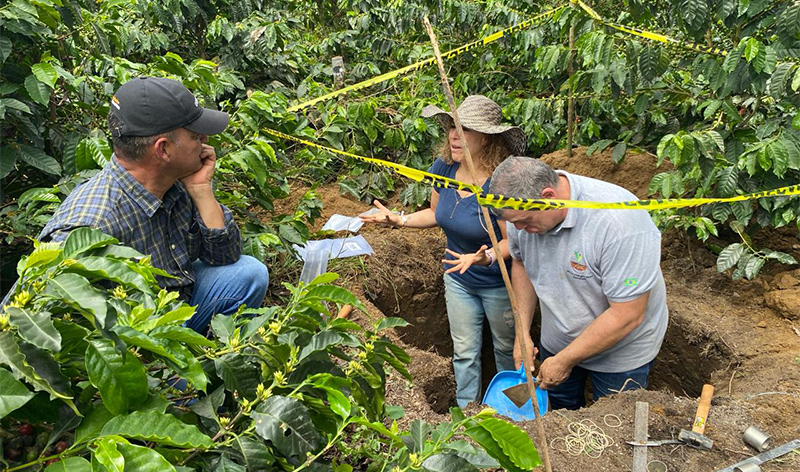Ensuring food security means not only being sustainable and producing more with less, but also restoring the soil and natural resources we use to produce food. This is what the future of agriculture focuses on.
By: Beatriz Arrieta
Regional Manager of Food Value Chains at Bayer Crop Science
Although it is not a new concept, regenerative agriculture is gaining momentum in agricultural and environmental circles, challenging conventional methods used in food production and bringing to the table discussions not only about how to produce more with fewer resources, but also on how to ensure the proper protection and restoration of natural resources, with a special focus on soil.

It then becomes evident that regenerative agriculture is directly related to food security, since in the long term it can generate more sustainable and resilient production systems; but it also brings benefits such as mitigating climate change, through reducing greenhouse emissions and increasing carbon absorption; the maintenance, preservation or restoration of biodiversity in regions, the conservation of water resources through better water retention, and better living conditions for farmers and their communities, thanks to increased yields and improved the productivity. It is about “future-proofing” agricultural operation and production in a changing climate, strengthening resilience and working in harmony with nature.

Soil health is the basis of regenerative agriculture and this means developing actions that allow it to be cared for, since degradation due to inappropriate agricultural practices affects 1,660 million hectares according to the FAO[1], and if the trend continues to be the same, by 2050, 16 million square kilometers would show continued land degradation, equivalent to the size of South America. This causes its physical-chemical properties to change, affecting its fertility and directly and indirectly generating significant amounts of greenhouse gases. Under conditions of regenerative agricultural systems, soils can retain up to three times more carbon efficiently, becoming the largest repository of greenhouse gases we have.
Healthy soil is essential for any agricultural system and its care will determine success in the implementation of increasingly profitable models, such as regenerative agriculture. This is why it is essential to implement basic practices such as zero or reduced tillage, intercropping and rotating crops, having cover crops and/or optimizing the use of agricultural inputs. With these practices, the main objective is to increase the organic matter of the soil and, with this, increase its capacity to retain water and nutrients. At the same time, the diversity of crops and the presence of beneficial microorganisms are promoted, which contributes to their general health, maintenance and increase of biodiversity and the resilience of the agricultural ecosystem.
At Bayer we have a clear vision of bringing regenerative agriculture to scale, using innovation, leveraging our global reach with strong local credentials and understanding that this model is results-oriented, all with the goal of ensuring food security. This has led us to participate in initiatives such as "Living Soils of the Americas", led by the Inter-American Institute for Cooperation on Agriculture - IICA, which has three fundamental objectives: educating farmers about the importance of implementing regenerative agriculture practices, the measurement and capture of carbon in the regenerative agriculture model and generate the bases for national policies that promote the implementation of these production models.

This program, which began its activities a couple of weeks ago in Colombia, is an important example of how knowledge can be exchanged from different sectors and leverage the implementation of regenerative agriculture. Together with experts and farmers, we made regional visits to coffee crops in Santa Rosa de Cabal and banana crops in Urabá Antioquia near the Atlantic Coast, and we reflected on this transformation process, the adoption of practices to retain more carbon in the soil and the importance of measurement with formal indicators.
It is clear that this transformation process is challenging, as it may require changes in management practices, investments in infrastructure and technical training for farmers; in addition to modifications in the political, economic or cultural sphere of each of the territories. The conviction in the results of the implementation of regenerative agriculture is what leads us to start this process in Colombia, knowing that the adoption of the proposed practices will allow us to guarantee sustainable growth from an economic, social and environmental point of view, complying with our mission at Bayer, “Health for all, hunger for none.”
[1] The state of the world's land and water resources for food and agriculture . Synthesis report Rome Food and Agriculture Organization of the United Nations, FAO, and Earthscan . 2021
https://www.fao.org/3/cb7654es/cb7654es.pdf
https://www.fao.org/3/cb7654es/online/src/html/chapter-1-2.html#rtab_s2
https://www.unccd.int/sites/default/files/2022-04/Spanish.pdf
































